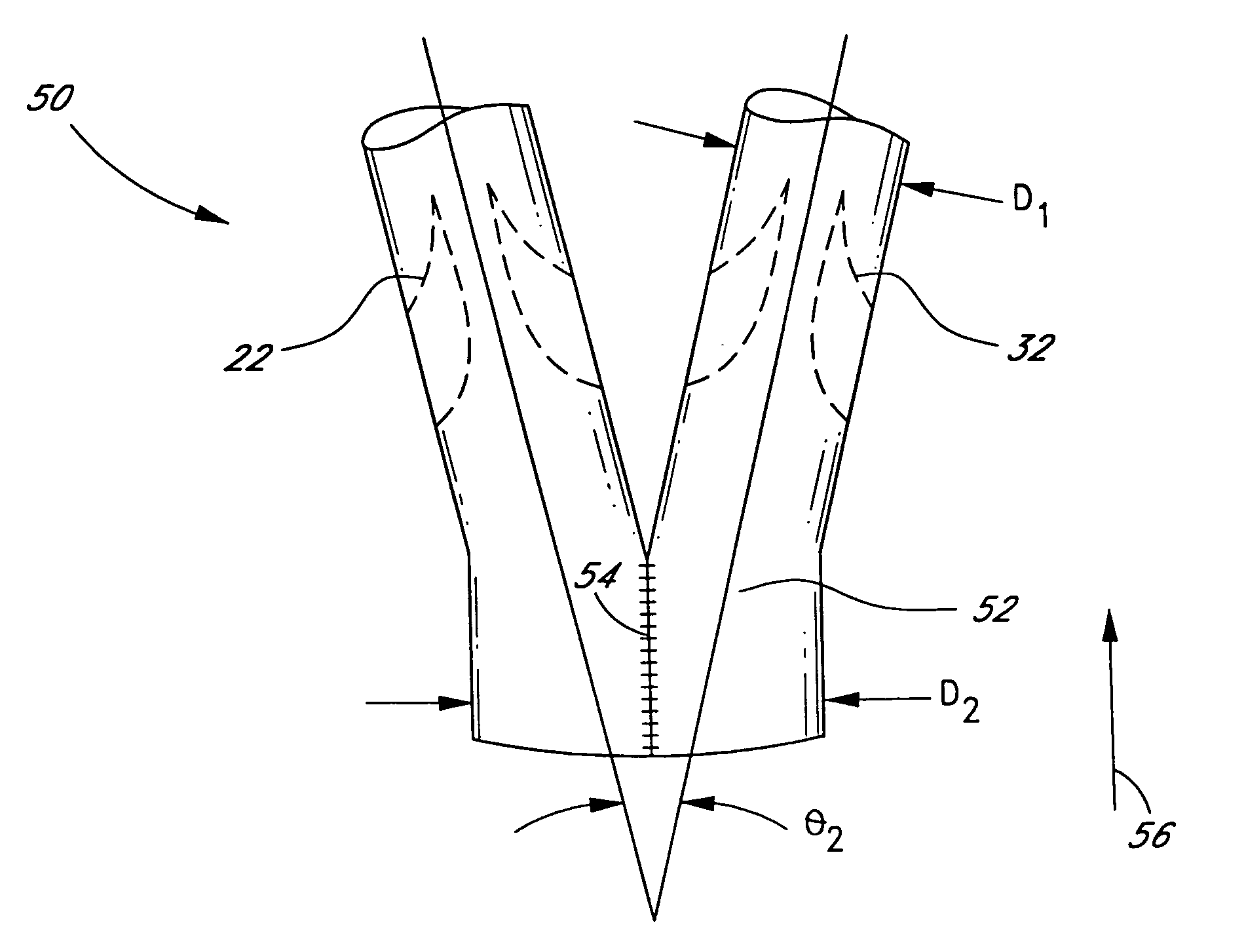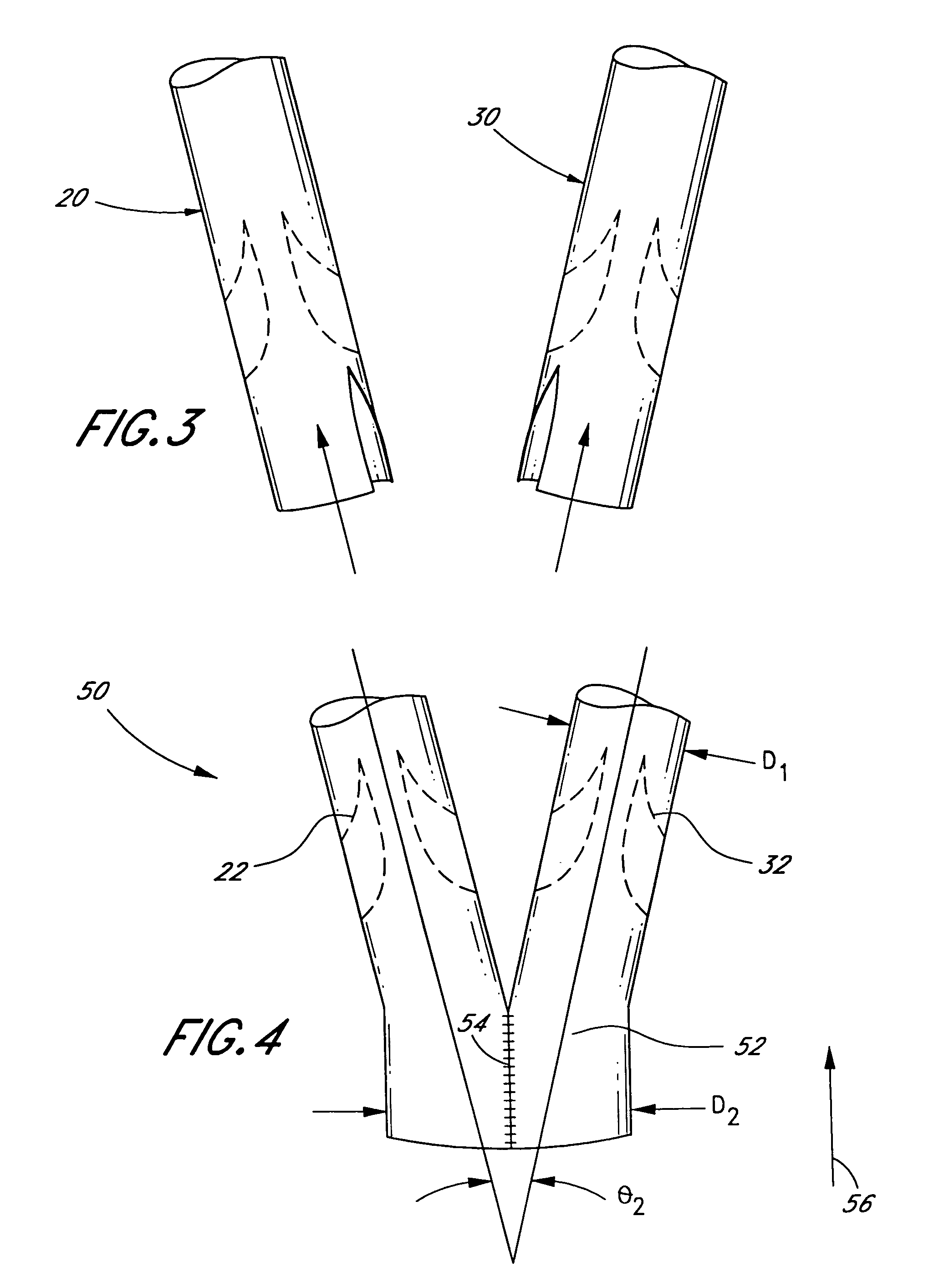Bifurcated biological pulmonary valved conduit
a biological and valved technology, applied in blood vessels, medical science, prosthesis, etc., can solve the problems of ineffective valve operation, ineffective valve replacement, and inability to operate effectively
- Summary
- Abstract
- Description
- Claims
- Application Information
AI Technical Summary
Benefits of technology
Problems solved by technology
Method used
Image
Examples
Embodiment Construction
[0015]With reference to FIG. 1, the present invention improves upon the use of a naturally-formed venous valvular conduit 10 consisting of a blood vessel 12 housing a biological valve 14. The valve 14 consists of a plurality of leaflets 16 (two shown) that easily open upon the flow of low pressure blood 18, but closely tightly against a relatively low backpressure of blood; remaining sealed even against backpressures as high as 200–300 mmHg. Such venous valvular conduits may be found, as indicated above, in one of many quadrupeds. Preferably, the donor venous valvular conduit is a section of the jugular vein of a quadruped, the diameters of which approach about 22 mm. While humans have naturally-formed venous valvular conduits, none approach that diameter.
[0016]With reference to FIGS. 2–4, the present invention comprises a method of making a vascular prosthetic comprising a valvular conduit suitable for pulmonary valve replacement, wherein the conduit has a diameter greater than 22 ...
PUM
 Login to View More
Login to View More Abstract
Description
Claims
Application Information
 Login to View More
Login to View More - R&D
- Intellectual Property
- Life Sciences
- Materials
- Tech Scout
- Unparalleled Data Quality
- Higher Quality Content
- 60% Fewer Hallucinations
Browse by: Latest US Patents, China's latest patents, Technical Efficacy Thesaurus, Application Domain, Technology Topic, Popular Technical Reports.
© 2025 PatSnap. All rights reserved.Legal|Privacy policy|Modern Slavery Act Transparency Statement|Sitemap|About US| Contact US: help@patsnap.com



